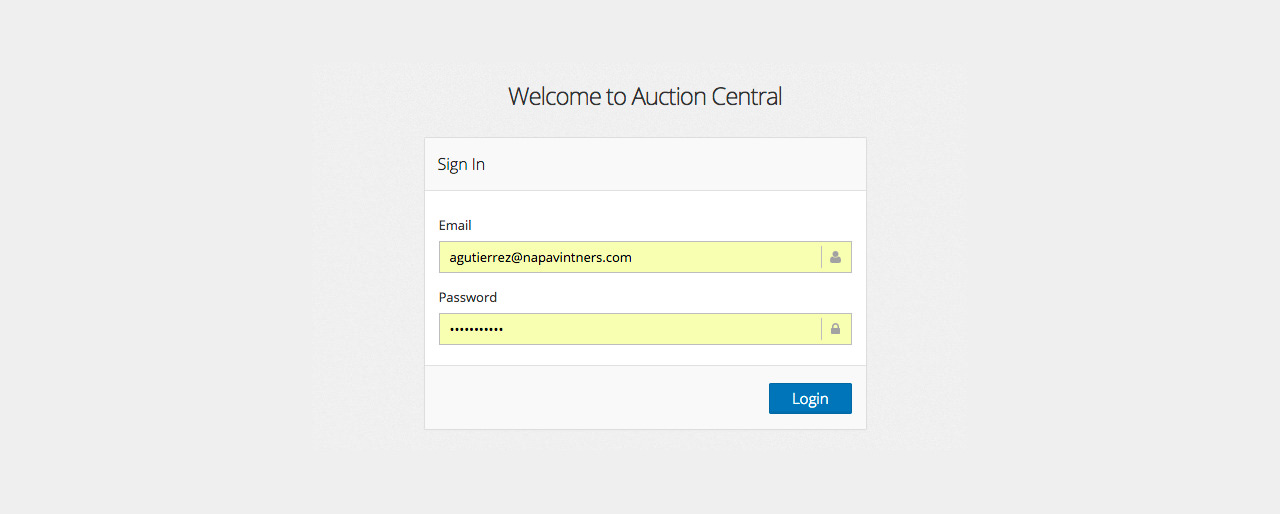Enhancing a custom in-house management service used to process registrations and event details for an internationally renowned wine auction event.
-
Timeline
2017–2019
-
Team
2–4
-
Role
Engineering | Product Design and Management

Background
In 2016, I began working with a consulting engineer who had previously programmed the existing platform used by the Napa Valley Vintners (NVV) to manage their event ticketing for an annual wine auction event.
The event was a high-profile and highly successful endeavor that required custom technology in support of its complex registration and ticketing system.
Each year after the event, staff would evaluate the system and bring me a wish list for new features or improvements.
My Contribution
Working as the NVV Web Manager, my role was to manage the product and development resources moving forward, design an improved UI/UX, define and provision all technical specifications, program new feature functionality, and set a high standard for quality assurance.
Environment
The project was developed in Ruby on Rails and deployed to a custom configured nginx virtual server hosted on Azure’s cloud platform.
Components
While UI/UX improvements to the functionality were on-going, major development projects included designing and developing an on-the-fly package builder for custom registrations, reprogramming the registration interfaces, and improving reporting.
Dynamic Registration Packages
One of the ways in which the existing system was most encumbered was the lack of versatility in it’s package building options. Each year I would have to personally configure the standard packages for sale through the event website, using tools provided in Auction Central. However, a large percentage of packages sold each year were individually customized to particular guests, which the system was not equipped to handle.
The problem created any number of headaches for those trying to use the system efficiently to make in-house purchases on behalf of registered guests who had called for customer service help.
To address these issues, I scrapped the existing interface to re-envision a new package builder flow that would allow for on-the-fly customizations at the time of purchase. I then worked in tandem with consulting engineers to program the new functionality within the RoR codebase, paving the way for a full codebase update that increased modularity and scalability.
Promo Codes
Another sore spot in the annual registration process was providing complimentary tickets to partnering organizations every year. Without contact or billing information, we were unable to process registrations in-house. So I enriched the promo code system in Auction Central so that codes could be distributed in bulk to partners, who could then use the code to register their own participants.
The codes were designed to be versatile and secure, allowing staff to assign codes to particular entities and enable specific purchases or customized pricing based on the provided promo code.
Reporting
Last but not least, as my experience with the codebase increased, I took on more of the feature programming myself. One such project was enhancing the registration reporting module to include more accurate and useful data, across more metrics.
The reports specifically included visually highlighting inconsistent or concerning data so that managers could investigate any issues thoroughly.
Outcomes
With continual development and progress instituted, Auction Central was an ever-evolving system that was constantly adapting to new project requirements and improving as a tool used widely by NVV staff. The innovations in dynamically building packages at the time of purchase, in particular, had a significantly positive impact on event operations—drastically reducing the amount of time technical support was needed to resolve specialized purchases.
In 2020, the event that Auction Central supported was put on hiatus indefinitely due to pandemic restrictions. When the program returned two years later, the model had been changed enough that rebuilding or maintaining the current infrastructure no longer made sense, so the codebase was archived offline.